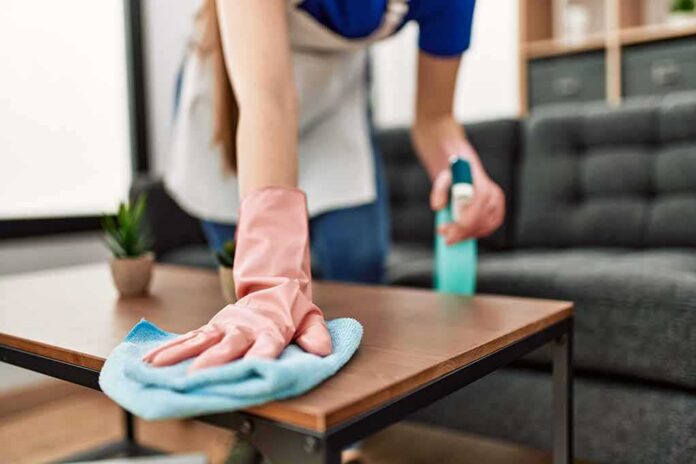
(GoHealthier.com) – Viruses, bacteria, and other types of microorganisms such as mold spores can make you, your family, and your pets very sick. However, there’s a careful balance — without exposure to these germs, we don’t develop resistance to them. When it comes to maintaining a clean home, a sterile environment isn’t best, but clean is still important. Exactly how much should you obsess over having a clean home? The answer: it depends upon the needs of your household.
Consider Every Household Member
Elderly relatives, immunocompromised household members, young children, or house guests with unknown needs will generally require fewer germs in their environment than most people. If you have people in these categories in your home, consider weekly deep cleaning and disinfecting with a comprehensive sanitization routine.
Focus on Frequently Used Areas
The areas we use most are the ones that tend to carry the most dangerous germs. When it comes to daily cleaning, think about:
- High-traffic entrances and exits, where people and pets can track germs from the outside.
- Bathroom toilets, sinks, and tubs, which are breeding grounds for mildew, mold, and bacteria contained in fecal matter.
- Kitchen counters and sinks, where you can find dangerous organisms from food preparation, such as salmonella and e. coli.
- Any surfaces touched frequently, such as remote controls, door knobs, microwave handles, and dishwasher machine handles.
- Trash cans, home to dirty tissues and other waste.
- Linens that come into contact with sick family members, such as the sheets of a family member who has the contagious c. diff.
Carpets and Floors
Carpets and floors can hold a fair amount of gunk from inside and outside, especially if you have pets. At minimum, it’s advisable to clean all the floor and carpet surfaces in your home weekly.
To minimize the risk of infection from contact with these surfaces, consider banning the wearing of shoes in your home, as they can track all sorts of contagions from the outside world. To help people feel more comfortable in your home, offer slippers to family members and guests.
Don’t Forget the Dirtiest Spots in Your Home
Some of the dirtiest spots in your home aren’t in plain sight, and you might not use or look at them often — which means it’s quite easy to forget about them during routine cleaning. Keeping these types of spots clean also means preventing smells in some instances. They are:
- Refrigerator shelves: Beware food spills that have become science experiments. Clean up new spills fast, and set a monthly cleaning schedule for your entire fridge.
- Garbage disposal and under the sink: You toss food in, flip the switch, and the food magically disappears! Garbage disposals are great for cleanup, but if you have one in your sink, they can also trap harmful food and bacteria. Make sure you place the switch in the off position prior to cleaning near the entrance to the disposal. To safely clean the disposal, use FDA-approved cleaning products especially for that purpose and follow instructions carefully. Don’t forget the potentially damp under-sink area while you’re at it.
- Other places food touches: The range hood can collect grease, as can the stove top. You also use your hands to touch all sorts of surfaces, dials, and knobs in the kitchen. Make sure to disinfect weekly if you cook frequently.
Maintaining a clean home is overwhelming, especially if you’re not able to get the assistance of a housekeeper. However, you can also consider air purifiers, humidifiers, and dehumidifiers to keep a clean and safe home and maintain control over your environment. Germs aren’t 100 percent preventable, but clean living is within your control.
Copyright 2024, GoHealthier.com














